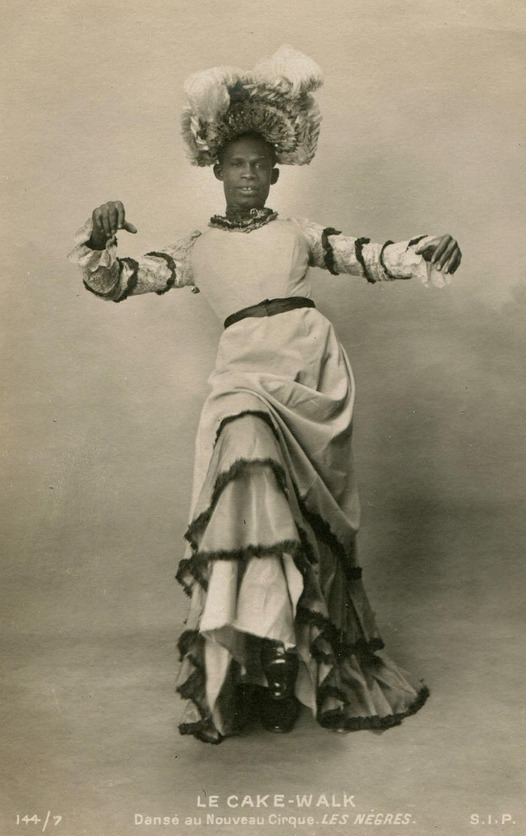#william dorsey swann
Text
feeling very keenly today the way that gender transgressors from the past have such larger-than-life personalities -- the way their disobedience and outlawism creates fantastic, heroic, eccentric revolutionaries and how that language plays into modern day mythologies without attaching itself to the people who created the language in the first place (ex. rebels against The System) and how many of these people came from poverty or even slavery and how many were sex workers at one time or another and how many were considered mad by their peers and how many of them existed along axes of oppression
#dr james barry#the mademoiselle d'eon#william dorsey swann#billy tipton#and more recently:#marsha p johnson#leslie feinberg#sylvia rivera#michael dillon#miss major#dora richter#toni ebel#gluck#etcetc
648 notes
·
View notes
Text
The First Self-Proclaimed Drag Queen Was a Formerly Enslaved Man
In the late 19th century, William Dorsey Swann’s private balls attracted unwelcome attention from authorities and the press

In the late 1880s, a formerly enslaved man named William Dorsey Swann started hosting private balls known as drags, a name possibly derived from “grand rag,” an antiquated term for masquerade balls. Held in secret in Washington, D.C., these parties soon caught authorities’ attention.
As the Washington Criticreported in January 1887, police officers who raided one such gathering were surprised to encounter six Black men “dressed in elegant female attire,” including “corsets, bustles, long hose and slippers.” The following April, the Evening Starreported on a raid that targeted men in “female attire of many colors,” as well as “gaudy costumes of silk and satin.” On both occasions, authorities arrested the party guests and charged them with “being suspicious characters.”
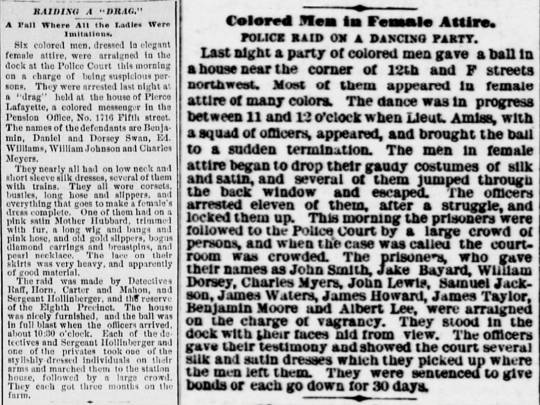
Joseph’s chance find marked the beginning of a yearslong quest to uncover Swann’s story—and, with it, the history of drag in the United States. He chronicles the results of this research in an upcoming book titled House of Swann: Where Slaves Became Queens—and Changed the World. Drawing on extensive archival research, Joseph presents a compelling portrait of the nation’s first self-proclaimed drag queen. The historian proudly positions Swann as the “first queer American hero.”
The identification of Swann as the first reported drag queen in the U.S. is a “major event,” says Jen Manion, a historian at Amherst College. “LGTBQ history is hampered by the lack of diaries and personal letters and family papers, because you just don’t put [those feelings] in writing.” For much of recorded history, Manion adds, being gay or bisexual was considered “a sin; it’s illegal.”
Joseph says his research resurfaces the “experiences of queer people, … historical experiences, not fictionalized experiences, documenting them rather than speculating.” These findings, in turn, helped him pinpoint the birth of “the drag queen.”
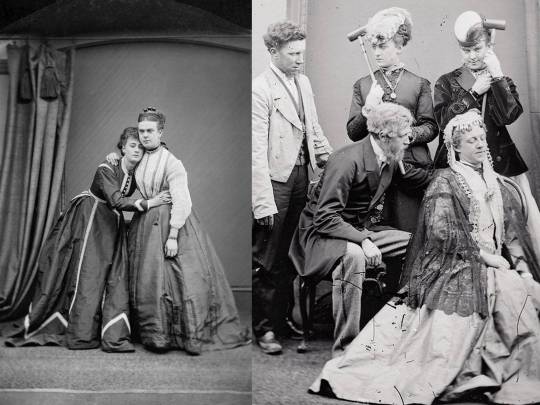
The concept of drag “existed for some period of time unknown,” says Joseph. But the term only came into use in 19th-century Great Britain, where Joseph says it referred to “a gathering of people, particularly men, who were dressing as women.” In 1871, two members of the British aristocracy were put on trial after they were caught dressing as women in public. Authorities charged Ernest “Stella” Boulton and Frederick “Fanny” Park with “conspiring and inciting persons to commit an unnatural offense.” A jury found the defendants not guilty but handed down a minor indictment to the men for wearing women’s clothing.
Cross-dressing, which is often a component of drag, has a lengthy history on both the stage and the screen, from Elizabethan-era performances in which men played women to Japanese Kabuki theater. In the early 20th century, performers like Julian Eltinge became stars by impersonating women during the vaudeville craze. In the 1950s, Milton Berle dressed as a woman on his variety TV show, as did comedian Flip Wilson in the early 1970s. In the early 1980s, the sitcom “Bosom Buddies” starred Tom Hanks and Peter Scolari as two young men who disguise themselves as women so they can live in an inexpensive, women-only apartment building.

Historian Kathleen Casey, author of The Prettiest Girl on Stage Is a Man: Race and Gender Benders in American Vaudeville, takes a much wider view of drag. While she includes all manner of cross-dressing performances in her definition, she doesn’t think there will ever be “a stable meaning of the term ‘drag.’” Casey adds, “Drag is about race, class and sexuality as much as it is about gender. If we focus exclusively on only one of these intersections, we fail to see how drag performances are layered across time and space and can have multiple meanings for different audiences.” Drag, she says, is really about a performer’s own perspective of their work, as well as audiences’ understanding of this work.
Many of the “contemporary categories and terms that we use in modern life to describe LGBTQ people or sexual and gender minorities” date to the late 19th century, says Manion. “Lesbian,” for instance, was first used in a medical journal in 1883. The historian adds, “We debate amongst ourselves as scholars when it seems appropriate to use contemporary terms to describe things [in] the past, but in this case, these were terms used by … the people at the time as well.”

Swann was born into slavery in Washington County, Maryland, around 1858. According to a 2021 entry by Joseph in the African American National Biography, Swann was the fifth of 13 children born to enslaved housekeeper Mary Jane Younker and enslaved wheat farmer and musician Andrew Jackson “Jack” Swann. (His biological father may have been a white man, but Joseph hasn’t found definitive evidence confirming this theory.) After the Civil War ended in 1865, Swann’s parents bought a plot of land and started a farm. Encouraged to work as soon as he was old enough, the young Swann found employment as a hotel waiter. In 1880, he relocated to Washington, where he worked as a janitor and sent money back home to his family.
Like Washington more broadly, the capital’s underground queer networks were divided into white and Black communities that rarely intersected. As a 2019 report prepared for the city’s Historic Preservation Office notes, “It was a hushed fact that Lafayette Square in D.C., which is adjacent to the White House, was a known cruising spot for gay men, both Black and white,” but the majority of these individuals were only interested in liaisons with partners of the same race. An exception to this trend was Washington’s drag scene, which often attracted mixed-race audiences.
Forging a place for himself in the city’s queer Black community, Swann held parties that Joseph deems the first documented “drag balls” in American history. Held in secret, they provided a safe space for gender expression but were risky to attend. “A large but undetermined number managed to flee during the police raids, but the names of those arrested and jailed were printed in the papers, where the men became targets of public scorn,” wrote Joseph for the Nation in 2020. “In post-Civil War America, there was very little patience for men who subverted gender norms.” Sentences for those charged with attending drag balls ranged from around three to ten months.

Around this same time, Swann became enthralled by the “queens of freedom” crowned at Washington’s Emancipation Day parades—annual celebrations first held in April 1866. Historically, each neighborhood was represented by a woman who “personified freedom for Black people,” according to Joseph. Inspired by these queens, Swann started crowning the winners of his dance competitions the “queen of the ball,” says Joseph.
Swann also adopted the title for himself. As the Washington Critic noted on April 13, 1888, “William Dorsey, who, by the way, was the ‘queen,’” was one of 13 people arrested during a raid on a “drag party” the previous night.
“There’s this concept of drag, which is separate, and there’s the concept of queens of freedom, and in D.C. in this particular time, post-slavery, post-Reconstruction, these two concepts collide,” says Joseph. “To identify as a drag queen, which is what William Dorsey Swann did, is combining these two strains, these two cultural traditions.”
The 1880s saw a “wave of laws passed in cities all across the country explicitly banning cross-dressing,” says Manion, who adds that the rules were “applied very selectively” and were riddled with inconsistencies and contradictions. The arrests of Swann and his friends were “even more sensationalized in the press and probably drew the attention of authorities because most of the participants were Black,” Manion explains. “And this is in Jim Crow America. For queer … Black Americans to just see so much joy and freedom in their gender expression at this time was definitely seen as a threat.”

The court sentenced Swann to 300 days in prison. After serving three months of his sentence, Swann, who had pled not guilty, filed a petition for a pardon from President Grover Cleveland, says Netisha Currie, an archives specialist at the National Archives, which houses a copy of the petition. In a show of support, 30 of Swann’s friends signed the document. But U.S. Attorney A.A. Birney argued vehemently against the pardon, stating,“The prisoner was in fact convicted of the most horrible and disgusting offenses known to the law; an offense so disgusting that it is unnamed. … His evil example in the community must have been most corrupting.”
Ultimately, Cleveland denied the petition. Still, wrote Joseph for the Nation, Swann’s unsuccessful attempt to clear his name represents the earliest documented example of an American activist taking “specific legal and political steps to defend the queer community’s right to gather without the threat of criminalization, suppression or police violence.”
As Manion says, “What’s unique about [Joseph’s] work is that it captures a collective community. When we have been able to identify queer and trans figures in this era and earlier, we find them in isolation. And we can seldom connect the dots to say, ‘Oh, these two couples were friends. They always hung out.’ … We have very little evidence of collective socializing.”

No known pictures of Swann survive. But his contributions to queer activism in Washington will soon be recognized with the redesignation of a stretch of Swann Street Northwest in his honor. The street was originally named for Thomas Swann, a former Maryland governor and Baltimore mayor who bore no relation to the drag queen.
“We have seen so much anti-trans and anti-drag legislation and rhetoric around the country in a very problematic way,” says Brooke Pinto, a D.C. Council member who introduced the bill. “In Washington, D.C., where we are proud to have so many trans residents, we [need to] speak up and recognize, sometimes through symbolism, sometimes through legislation, how important these issues are.”
The bill also calls for a historic plaque to be posted in Dupont Circle, a Washington neighborhood with a rich LGBTQ history. The plaque will sit at the corner of New Hampshire Avenue, Swann Street Northwest and 17th Street Northwest.
“One of the things that’s so exciting about this case is that it is an African American man who was formerly enslaved,” says Manion. Such individuals “just don’t get … recognition in our histories of LGBTQ people, in part because we usually can’t find them in the archives. But … Swann was hiding in plain sight.”
#swann#Drag Balls#Origins of Drag Balls#DC#LGBTQ+#The First Self-Proclaimed Drag Queen Was a Formerly Enslaved Man#William Dorsey Swann#Drag Queens#origins of drag ball culture in DC
9 notes
·
View notes
Text
Black Queer Figures Day 3
William Dorsey Swann
Swann was born into slavery in 1860 as the fifth of 13 children. As an adult Swann settled in Washington D.C. where he became known for holding drag balls. He was known as "the Queen" by friends and rerferred to himself as "the Queen of Drag". Swann's parties were frequently raided by the police, the raid on his thirtieth birthday party being the most notable as it is the first documented arrest for female impersonation. Swann resisted arrest in his "gorgeous dress of cream colored satin" reportedly telling a police officer "You is no gentleman".The 1888 Washington Post article reporting the raid brought the previously underground world of drag into the light (and also how Swann's existence was rediscovered over a century later). Swann continued hosting balls, and was arrested again in 1896 for "keeping a disorderly house". He requested a presidential pardon from Grover Cleveland, who refused his request. This was the first recorded case of an American taking political/legal action to try and defend the LGBTQ community's right to gather. Swann retired from drag in 1900, passing the torch to his brother who also made clothes for the community. Swann died in 1925.
#black history month#black history matters#black history#lgbt history#lgbtq#lgbtqia#drag queen#Queen of Drag#William Dorsey Swann
0 notes
Text
No known pictures of Swann survive. But his contributions to queer activism in Washington will soon be recognized with the redesignation of a stretch of Swann Street Northwest in his honor. The street was originally named for Thomas Swann, a former Maryland governor and Baltimore mayor who bore no relation to the drag queen.
“We have seen so much anti-trans and anti-drag legislation and rhetoric around the country in a very problematic way,” says Brooke Pinto, a D.C. Council member who introduced the bill. “In Washington, D.C., where we are proud to have so many trans residents, we [need to] speak up and recognize, sometimes through symbolism, sometimes through legislation, how important these issues are.”
The bill also calls for a historic plaque to be posted in Dupont Circle, a Washington neighborhood with a rich LGBTQ history. The plaque will sit at the corner of New Hampshire Avenue, Swann Street Northwest and 17th Street Northwest.
“One of the things that’s so exciting about this case is that it is an African American man who was formerly enslaved,” says Manion. Such individuals “just don’t get … recognition in our histories of LGBTQ people, in part because we usually can’t find them in the archives. But … Swann was hiding in plain sight.”"
1 note
·
View note
Text
youtube
An attempt to look up the origins of the term "drag" led me to this absolute legend.
1 note
·
View note
Text
Historian Henry Louis Gates, Jr., has called the Harlem Renaissance "As gay as it was Black."
With the convergence of the great migration and the jazz age, Harlem became a new center of cultural life for African-Americans. It brought together Black artists in a way that had never been seen before and saw an abundance of new music, theater literature, and art.

Chief among the new art being created there, of course, was drag.

While drag houses and drag balls had previously been put together by the likes of William Dorsey Swann, they reached a level of unprecedented vibrancy and popularity in Harlem in the 1920s. Famed poet Langston Hughes called them "The strangest and gaudiest of all of Harlem's spectacles."
The most celebrated of these balls was the one organized by the fraternal organization The Society of Odd Fellows at the Hamilton Lodge.

As told by writer George Chauncey in an article for Columbia News, "After I published Gay New York I met a gentleman who grew up in Harlem whose parents would dress up to go to what they called the “faggots’ ball,” and come home and talk about how fine this one looked, and how wonderful it was. He said, "My mother was a very ladylike lady. She was a very prominent woman in Harlem society. This is just something you did.""
710 notes
·
View notes
Note
Black genderfluid culture is looking up for representation and being like: “Why are you white? Where's my representativity, WHERE'S THE MFS THAT REPRESENT MY TRANSITION GOALS???”
I'm dead serious, the amount of times I looked for androgynous people for a lil reference (I need some visualization, long story short I'm using subliminals to get rid of gender dysphoria) and only white and sometimes east asian people popped up makes me mad because: Yo, why only the white enbies get their reference and representation? Why not me? Hm??
And that makes me feral, because the most queer representation, specially trans representation, we see is white. All white people, and that's infuriating because people of colour, trans women of colour, more specific, were a huge, HUGE, part of queer history, and y'all decide to simply ignore our voices? Really nigga? 🤨
Taking this opportunity on this black history month, I wanted to make a highly important request: Dear lgbtqia+ community: PLEASE HEAR COLOURED QUEER VOICES.
Sorry for the rant, I need to get that out. =3
no no you get it.
im white but we don’t talk about that lmao
in the past, A LOT of black folks did a LOT for this community. The fact that the face of the community is now a gay, cis, skinny white guy FUCKING SUCKS!
William Dorsey Swann and Marsha P. Johnson are just two of the names that SHOULD BE TALKED ABOUT MORE!
Please, support your POC girlies! (gender-neutral) This is such a big issue in the LGBTQ community and many others! And you’re right, there really aren’t ANY references for black LGBTQ people.
If anyone has any resources/photos or anything you’d like to share regarding this, please do!!
I’m also passionate about this if you couldn’t tell LMAO
484 notes
·
View notes
Text
Being pale rly do carry u in even the modern notion of queerness bc the first drag queen was a black person born into slavery william dorsey swann but somehow men who hated gay ppl+ ‘came out as straight’ in the peak of HIV/AIDS r considered historical queer icons bc they had pale skin and a thin wrist.
170 notes
·
View notes
Text
Paris Is Burning
Continuing my series of learning about things referenced in the book, I'm looking at things Alex references when he talks about engaging with queer history. These are all tagged #a series of learning about things that are referenced in the book, if you want to block the tag.
Please note the following topics are metioned: murder, AIDS - and death due to complications, sexual violence, sex work, racism, queerphobia.
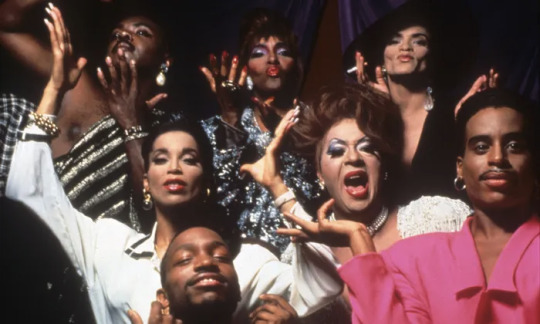
Paris is Burning is a documentary film, released in 1990, that focuses on the 1980s ball culture of Harlem (New York) and the communities of gay & transgender African-American &Latino people involved in that culture. It offers an exploration of race, class, gender, and sexuality in the US at that point in time. The AIDS crisis was growing in severity, and impacted many of the people involved with the documentary. Many of them have since died due to AIDS complications - including Angie Xtravaganza (age 28), Dorian Corey (age 56), and Willi Ninja (age 45).
Documentarian Jennie Livingston interviewed key figures in the ball world, and the film features monologues from many of which addresses their understanding of gender roles, subcultures of both the ball world and the queer world, as well as sharing their own life stories. It also provides an introduction to slang terms used within the subculture, such as house, mother, shade & reading. Interspersed with this is footage of colourful ballroom performances. The documentary also looks at how AIDS, racism, poverty, violence, and homophobia impacts their lives. Some of those involved became sex workers to support themselves, at great risk to their safety - one member is found strangled to death, seemingly by a client. The 'Houses' of the ball culture provide safety and security to those disowned by queerphobic parents, as well as those largely ostracised by mainstream society.
The documentary did have some criticisms - notably for reinforcing stereotypes, having a white filmmaker, and for not properly providing compensation - but it has remained important as a depiction of ball culture, the most prominent display until Drag Race began to popularise the concept to a wider audience.
-----
Ball culture - also known as the Ballroom Scene/Community, Ballroom Culture or just Ballroom - takes its origins from a series of drag balls, including those organised by William Dorsey Swann (the first person known to self-describe as a drag queen) in Washington DC, during the late 1800s. These drag balls were masquerade themed and took place to defy laws which banned people from wearing clothes of the opposite gender. Many early attendees were formerly enslaved men, and the events were held in secret. While balls were integrated during a time of racial segregation, non-white performers regularly experienced racism from the white judges and performers. This prompted Black and Latino performers to create their own spaces within the subculture, and the modern culture grew out from Harlem in the late 1960s, spreading to other major cities soon after.
The structural and cultural issues facing the community in 1980s New York - including poverty, racism, homophobia, as well as sexual violence and AIDS - didn't stop Ballroom from thriving, acting not only as an escape from real life but also offering those involved a support system that was not often present in other areas of their lives. The culture included a system of 'Houses' - headed by an elder queer person (although often not much older than those in the family), either a 'mother' (mostly gay men or trans women) or a 'father' (mostly gay men or trans men) - which would become a surrogate family for young queer Black and Latino youth who were estranged from family, homeless, and/or struggling to get by. House members would often take on the surname of their house parent, and the houses would compete together in balls - often with a specific style identifiable as belonging to that group.
Drag ball culture works to resist the dominant cultural norms people experience from wider society. The performers create a space to challenge gender roles and heteronormativity through subversive outfits, slang, and actions. It gives them a space to feel supported and to work through their abuse they experienced as members of minority groups.
The balls not only provide a community, but also provide spaces for education. Aware of the prevelence of AIDS and the lack of support, in 1990 the Gay Men's Health Crisis (GMHC) launched the Latex Ball to distribute health information to those involved in ball culture. Offering free HIV testing and prevention materials, it attracts thousands of people from around the world and is still active to this day.
-----
The importance of Paris is Burning continues to grow as the years pass. It was a rare film that focused on the lives of queer people of colour, whose charisma and humanity shines through in their witty to-camera interviews and their fierce routines and performances.[source]
Sources:
Wikipedia - Paris is Burning
Guardian - Burning down the house: why the debate over Paris is Burning rages on
Vanity Fair (archived) - Paris Is Burning Is Back—And So Is Its Baggage
Janus films - Paris is Burning
Wikipedia - Ball Culture
Rolling Stone - Striking a ‘Pose’: A Brief History of Ball Culture
All Gay Long - A Brief History of Modern Ballroom Culture
Shondaland - The Psychological and Political Power of Ball Culture
Additional Reading:
Paris is Burning, 1990
#elio's#elio's meta#a series of learning about things that are referenced in the book#long post#alt text added#rwrb#red white and royal blue
17 notes
·
View notes
Text
18 notes
·
View notes
Text
12. why the 1880s?
something about this decade really sings to me. I find in particular, nearing the end of the nineteenth century, so much was happening on around the world in terms of arts, politics, technology, colonization. world events and global news don’t personally reach the day-to-day lives of the everyday folk, but they are an important part in gauging what life, thought, and society was about—what things were important then and now?
basically for myself, reminding me of notable things that occured during the 1880s—some thematic, some of relevance to context and characters, and the rest just ?? interesting and/or wild?
cocaine is a hot new cure for everything and anything. perscribed, sold in foods and more. heroine introduced as a lesser-addictive substitute for morphine…
lots of developments in fields of psychology; many experiments and happenings; Freud starts his work 1886.
1880-1914 had +twenty million immigrants to the United States: Germany, Ireland, England, China had the most arrivals.
William Dorsey Swann, the first self-proclaimed drag queen, organizes a series of drag balls in Washington, D.C. 1880-1890s.
Jack the Ripper claims his “first” victim in 1888 White Chapel, London. big scare.
Sherlock Holmes first appears in Arthur Conan Doyle’s A Study In Scarlet as part of the British magazine’s Beeton’s Christmas Annual in 1887.
Strange Case of Dr. Jekyll and Mr. Hyde by Robert Louis Stevenson is published in 1886. Gothic fiction, drawing from emerging fields of science and psychology. & Treasure Island was published earlier in 1883 by him too!
Mark Twain drops The Prince and the Pauper (1881), Adventures of Huckleberry Finn (1884), A Connecticut Yankee in King Arthur’s Court (1889).
Bel-Ami, Guy de Maupassant’s second novel is published in 1885. about a man who seduces and manipulates high society French women in the French colonies for power and wealth. MOVIE WAS ADAPTED IN 2012 STARTING ROBERT PATTINSON LOL
western European art movements very romantic and swirly and pretty: Monet, Debussy xoxo.
meanwhile, African American ragtime music becomes the “pop” music across the pond here.
North Dakota (1889), South Dakota (1889), Montana (1889), Washington (1889) become states.
train segregation laws flag beginning of Jim Crow; Civil Rights Movement of 1875 voided, making discrimination in private is not illegal, and prohibiting state intervention to personal or commercial segregation. l*nching continues throughout the south. slavery may be over on paper, but indentured labour is legal.
1882 infamous O.K Corral gunfight.
Gold Rush continues, all over the world—South Africa, to British Columbia, to California, to Argentina, to Russia-China borders.
centuries of American “Indian” wars continue.
American Dawes Act of 1887 granted American government authorization to regulate indigenous lands, including creating and assigning and enforcing reservations.
Sitting Bull’s 1883 speech of the atrocities experienced at the hands of white American settler colonists.
Canadian Pacific Railway 1881-1885. foreign labourers were hired to do a lot of heavy, dangerous, unwanted work. in America, more than 100,000km of tracks were laid by majority Chinese, Irish, Scandinavian workers.
America’s Chinese Exclusion Act of 1882 and Canada’s Chinese Immigration Act of 1885 was officiated, enforcing law of a Head Tax to be paid for every Chinese person entering North America. over the course of the next couple of decades, the fee of $1,500 was doubled to $5,000 was increased 500% to $25,000 in today’s currency—per person. this had devastating and lasting impacts on generations and societies of Chinese living both overseas and already in North America. propaganda at this time created many racist myths that persist today: there are too many Asians, they are taking our jobs, (the men) are gross and effeminate and a threat to (white) women, they shady and scheming people. these were the first and only major federal legislation to explicitly suspend immigration for a specific nationality in American and Canadian history. (I study Asian Canadian history, I can go on about this all day)
Tong Wars (1883-1913) had Chinatown gangs and factions in violent street wars across America, San Fransisco to New York.
large, targeted, and repeated anti-Jewish rioting (pogorm) and antisemitism rampant throughout Imperial Russia, 1881-1882 had more than two hundred anti-Jewish events alone. Jews continue to be racialized and othered.
fuck ton of colonization happening in Africa and the Middle East, Southeast Asia. Berlin conference 1884-1885 literally chopped up Africa to distribute to European powers.
Irish nationalist efforts to push forth Home Rule bill of sovereignty is defeated in British Parliament. Irish are not “white”, they are “othered” in Europe and in Americas.
use of photographic film pioneered by George Eastman, who started manufacturing film. his first camera (Kodak) was ready for sale in 1888.
Thomas Edison gets lit in New York 1883 with first electrical power station. next several year sees major cities being lit up with street lamps and public lighting with the science and works of a Nikolas Tesla (1886-1893).
hell of a lot more inventions in the works and patents being claimed. Hertz and radiowaves, Bell for telephone services.
“Between the years of 1850–1900, women were placed in mental institutions for behaving in ways the male society did not agree with”
way too much history to cram, obviously. here are some keywords for further research oki
prison industry / spiritualism / opium epidemic / irregular and uneven “modernizations” in rural vs. urban areas / class and poverty gaps / morality scares, checks, comparisons, gaps / new businesses and gadgets, products, tech to help with anything / fascination of the (colonial) Other; side shows, “freak shows” and other human zoos
#update#victorian era#1880s#1800s#1880s history#update: research#writing research#drugs cw#lynching cw#inventions#technology#gold rush#ref: poc history#ref: indigenous history#ref: black history#ref: queer history#ref: womxn history#ref: research#american history
5 notes
·
View notes
Text
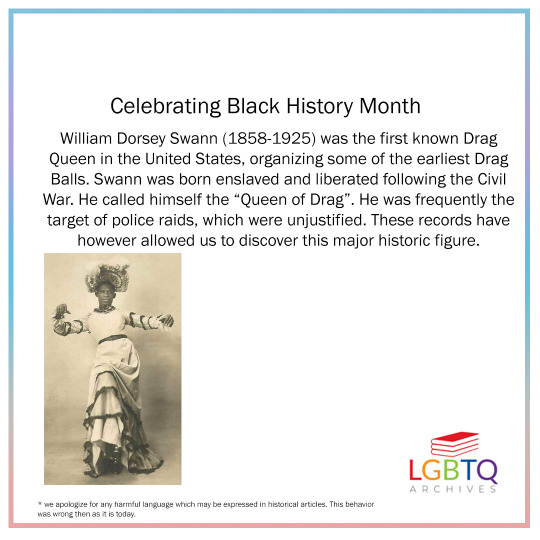
William Dorsey Swann was the earliest known Drag Queen in the United States, organizing some of the first recorded Drag Balls. Swann called himself the "Queen of Drag" and was unfortunately the target of arrests and police raids. At one point he had written to President Grover Cleveland requesting a presidential pardon, which was sadly rejected. Swann empowered the people around him to be as they are, including his relative Daniel Swann who continued his drag ball legacy.
7 notes
·
View notes
Text
William Dorsey Swann was the first documented Drag Queen. He was born a slave in Maryland in 1858. After he gained freedom he hosted a series of Drag Balls in the 1880s and 1890s. During these balls there was an event called a Cake Walk, where people would dance and the winner would get a cake. One Swann's balls was raided and he, along with 12 other black men, were arrested on April 12, 1888 as the first case of female impersonation in the United States. Swann was convicted of keeping a "disorderly house" which was a term that meant a brothel, however this was not true. Swann was also the first person to pursue legal and political action to defend LGBT rights when he wrote President Grover Cleveland asking for a pardon. However, it was denied. Swan went on to continue hosting balls until he passed the torch on to his brother, Daniel J Swann.


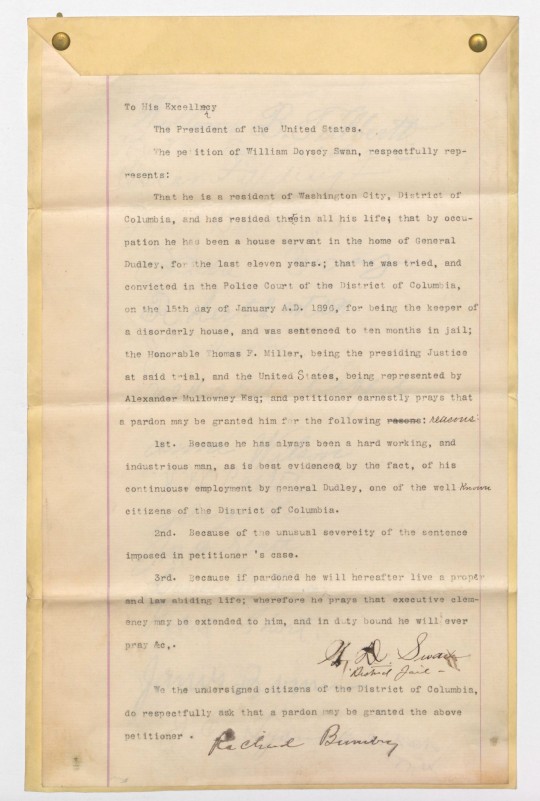
#lgbt history#lgbt#lgbtqplus#lgbtq#lgbt pride#lgbtqia#drag queen#drag#gayman#gay men#gaylife#gay#gay interest#blacklivesmatter#black history#queer#queer history#gay history#homosexual#drag history#william dorsey swann#cake walk#newspaper#lgbtq history#history#lgbtq community#lgbtq poc
17 notes
·
View notes
